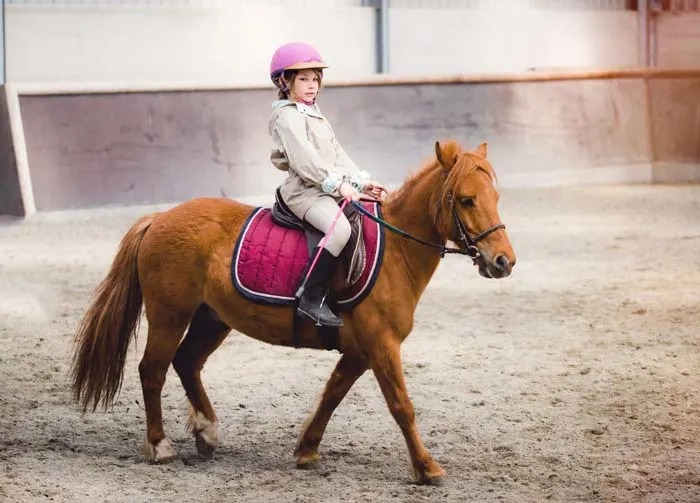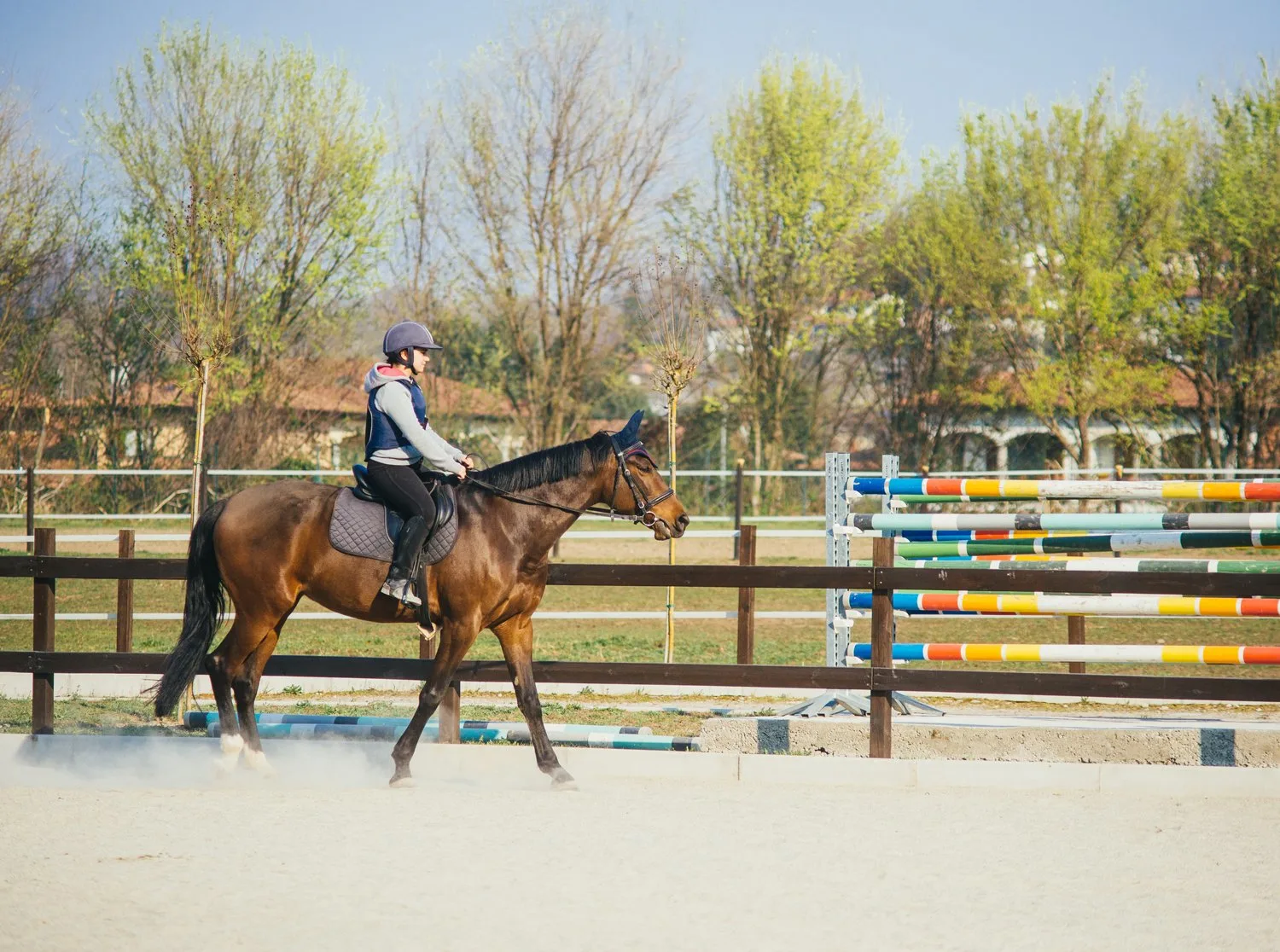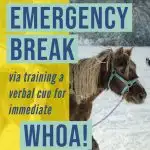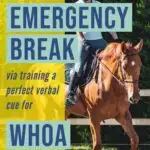When it comes to horse training, nothing is more fundamental than teaching a horse stop on command. Yet still, it’s something that many horse trainers skip.
Instead of learning the “whoa” command, many horses are trained to stop through body cues and rein cues. Typical ways to stop a horse include:
- sitting deep in the saddle,
- stopping the movement of your body from following the horse’s gait,
- and slightly tightening your grip on the reins.
All of these are “good” training, but in our opinion, part of every horse’s early training should include a verbal emergency stop. A horse that cannot stop when instructed to is not a safe horse for anyone to ride.
🗣️🛑 Training your horse to stop with a verbal cue, such as “whoa,” makes your horse safer on the ground and in the saddle.
In this article, you’ll learn how to train your horse to stop on a dime in response to a verbal cue. This skill is handy for any rider but essential for kids’ horses or horses written by beginners. Training the stop is pretty simple, like training any animal anything, it simply requires reinforcing a behavior the horse will occasionally do by themselves anyway.

Training “Whoa”
All pleasure horses should be trained to stop at the word “whoa”. Using a universal verbal cue, like “whoa,” means that the horse is safe for everyone. If the horse is sold to new owners or is being handled by someone else (like a farrier) or in an emergency situation (such as a vet clinic), other people will know how to stop the horse.
There are ways to train a horse to stop with your body that most horses understand, intuitively, very well. However, having a verbal “emergency brake” is a safety measure. It means if you’re not able to give that body cue or if you are in danger, you’ll always have a way to get your horse to stop. A horse can’t know “Whoa” too well!
One exception; If you show competitively, you MAY want to consider using a different word than “whoa” to train your horse to stop. In highly competitive show circles, other competitors might tell your horse “whoa” in the show ring and make him break his gait! Using, instead, “stop” or “halt” as your verbal cue is unique enough that unethical competitors probably wouldn’t guess it.
To start training your horse to stop on command:
Practice teaching your horse to stop, by saying “whoa” at a walk, at the same time you give other cues to stop. If your horse is sometimes hard to stop, begin this lesson after a long ride or lunging session, when the horse is already tired and will want to stop.

How to Train a Horse to Stop
Ride Forward
Ride confidently forward until you are ready to stop your horse.
Say Whoa & Sit Back
When you stop, drop your body down deep in the saddle like a sack of potatoes. This signals the horse that you have stopped riding, and most horses will stop.
Signal with your Reins
If the horse continues moving, give a signal with your reins: gently adding pressure to cue a halt.
Try an Emergency Stop
If the horse continues forward, there are options for emergency stops: you can pull one rein firmly around and direct the horse into such a tight circle that they have to stop.
Give Positive Reinforcement
When the horse stops, say “Good Whoa” and pat their neck. Dismounting right away and walking back to the tacking-up area can be a powerful positive reinforcement.
Practice at Different Gaits
Once you have mastered training your horse to stop at “whoa” at a walk, you can move on to the trot or the canter / lope.
Notes: Reins are Not for Stopping
Many first time riders are under the impression that the way to stop a horse is by pulling back on the reins. It’s not!
Reins are connected directly to a piece of metal in a horse’s mouth- pulling on reins can be painful! Sometimes, this pain might have the opposite effect. Instead of stopping, pulling the reins can cause a horse to bolt or toss their head!
Gentle pressure on reins is just one of several cues to stop a horse. Most horses will stop if their rider stops following the rhythm of their gait, sits back in the saddle, and says “whoa.” A slight tension on the reins can help reinforce that cue for horses who try to charge on ahead.
Be consistent
One great way to train a horse to stop on a dime is to finish your ride every day with a “whoa”. Make sure it’s in an unexpected place- like midway through the arena or a moderate walking distance from the barn.
Tell your horse “whoa” and as soon as they stop, pat them, and tell them they are a good boy/girl, then immediately dismount & loosen their girth. (If you’re riding in the pasture, go ahead and untack and turn the horse loose right there, carrying your tack back to the barn)
This is the FASTEST way to teach a horse to understand that stopping on command has a huge positive reward. Since horses are intrinsically lazy, this association will make them more likely to stop in the future, in hopes that they’ll immediately get to be loose with access to grass again!
Training a horse to stop on command may take a little bit of time, but is an essential skill that every horse needs to be taught.


